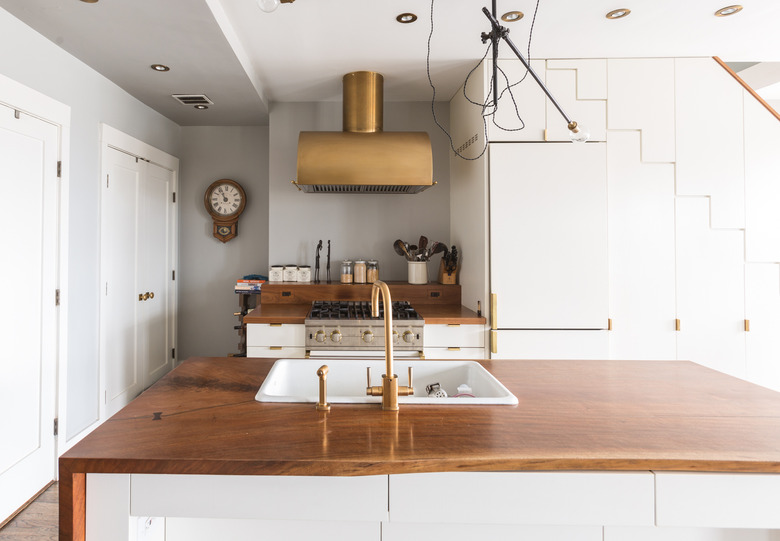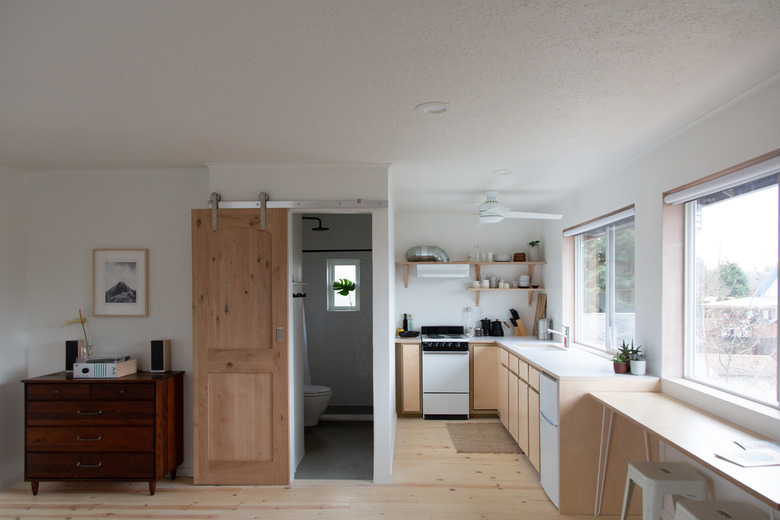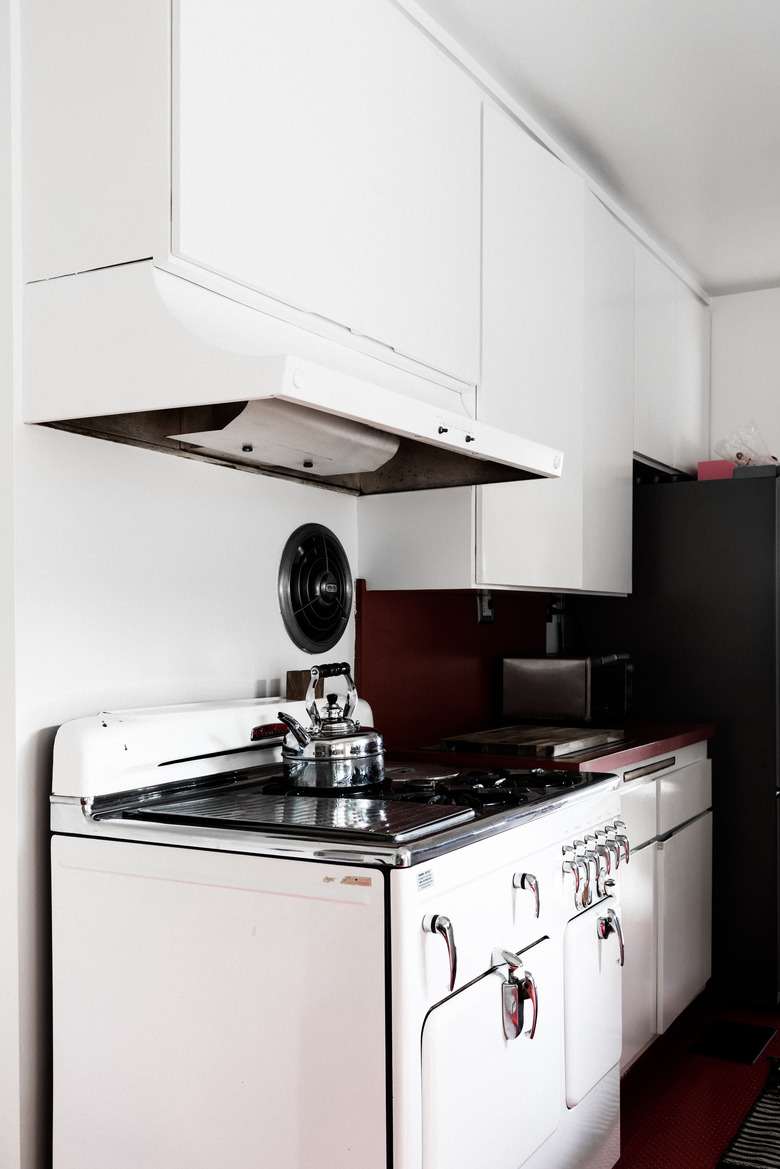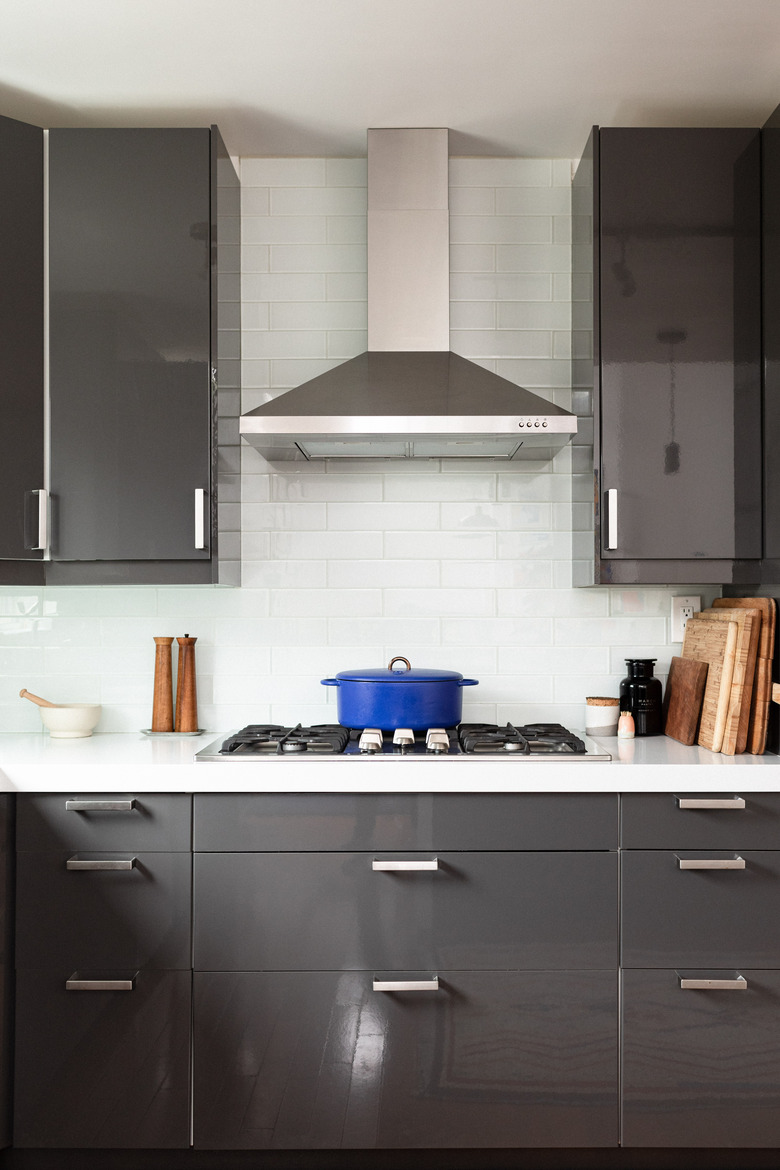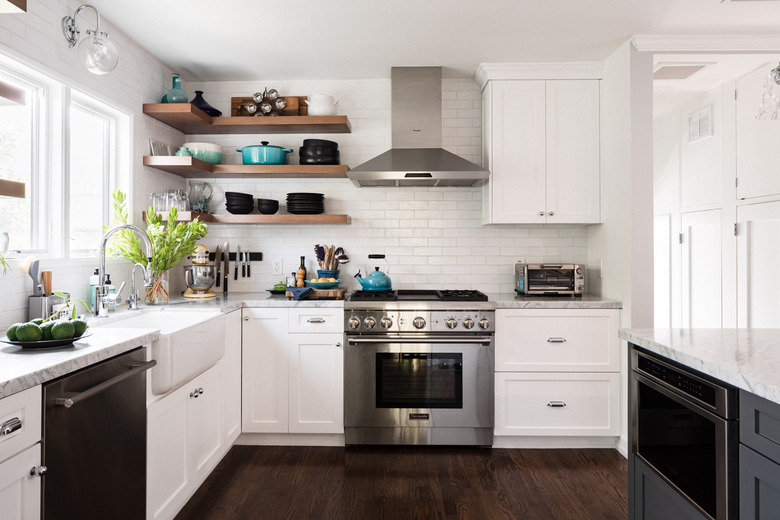How To Choose A Range Hood
Buying a range hood involves a lot more than just picking one that fits the budget and blends in with the kitchen's decor. The ideal range hood for any kitchen depends on a number of factors, such as the location and size of the range, whether any cabinets sit above the stove and whether installing ventilation ducts in the walls or ceiling is a realistic option. Once you've determined whether ducts are a viable option, it's easier to narrow down hood types and how much ventilation power your range requires.
Ducted Versus Ductless Hoods
Ducted Versus Ductless Hoods
Perhaps the most important consideration for choosing the ideal range hood is whether it's of the ducted or ductless variety. The ducted variety requires duct work running through walls or between floors, ultimately venting to your home's exterior. The ductless type filters and recirculates air instead, requiring no added vents or ducts.
A ducted vent hood does a much better job of removing heat and odors from the air since it releases them outdoors. The filtration system in a ductless range hood removes some smoke, but it does not reduce heat or moisture generated from cooking, so it's best to use only if a ducted hood isn't possible.
A ducted ventilation hood is best for ranges located on or near an exterior wall, as it requires space to run ducts in the walls or through a cabinet or ceiling, ultimately venting outside. For a ducted range hood installed above an island or peninsula, there still needs to be space for ducts to run through the ceiling. A ducted range hood may take more time and potentially cost more in labor to install, factoring in duct routing and installation.
For either type of hood, the width and depth of the hood should cover all of the burners near the back of the cooktop and at least partially ventilate the burners in the front in order to be effective.
Venting Capacity Concerns
Venting Capacity Concerns
It's a range hood's job to clear smoke and sometimes heat, moisture and odors out of the kitchen, and how quickly it draws that air up depends on the cfm (cubic feet per minute) rating of its fan. The higher the cfm, the more air the hood theoretically draws out of the kitchen. A large stove that gets a lot of use calls for a larger range hood and a more powerful fan than a compact stove used once in a while.
According to RangeCraft, the fan in the hood should vent at least 100 cfm for every 12 inches of stove width. In most cases, the hood size should be close to the same width of the cooktop area or a little wider, although the higher the hood is from the cooktop, the wider it needs to be in order to be effective.
If the fan draws more than 300 cfm out of your kitchen, that air has to be replaced somehow. This usually means air recirculation taken care of by the hood or fresh outdoor air drawn in through the HVAC ducts. Any range hood that draws more than 300 cfm comes equipped for one of these air-replacement systems, but this means added expenses up front and in operating costs.
To keep expenses reasonable, only choose a range hood and fan combination suited for your stove rather than one far more powerful than what you need. To find a range hood best suited to your kitchen, look for a hood that draws 1 cfm for every 100 btu (British thermal units) of burner power in your cooktop.
Keep in mind that the more powerful the ventilation system, the noisier it usually is too. Look for a range hood with two or three fan speeds, saving the highest setting for those days when cooking goes awry and creates a bit more smoke than expected. The lower settings are ideal for typical cooking scenarios and for ventilating the kitchen afterward.
Choosing a Vent Hood Design
Choosing a Vent Hood Design
Besides finish and style considerations, hoods also come in a variety of designs that determine how they mount and how they'll look in place. A wall chimney hood has an attached chimney duct above a wide hood canopy. For a ducted system, the ducts connect behind the chimney area, although some ductless hoods also have a chimney-style design. The chimney portion on some hoods may touch the ceiling, but some minimalistic models look more compact, ending abruptly before the ceiling.
An undercabinet hood is for a kitchen that has cabinets directly above the cooktop. These usually do not have a visible chimney-style attachment above the hood canopy. Undercabinet hoods can also be ducted or ductless. The ducted variety routes some of the ducts through the cabinet above the canopy, so some cabinet space above the canopy may be sacrificed for ducts.
A ceiling-mount or island hood looks a lot like a wall-mounted chimney hood except they attach through the ceiling and are built to look attractive when viewed from any side. Framework in the ceiling must be able to support the full weight of the hood. Ceiling hoods require 28 to 31 inches of space on average between the cooktop and bottom of the hood, so you may need to purchase chimney extensions if the kitchen ceiling is high. Read the full measurements before purchasing an island hood to ensure the selected model will fit based on your ceiling and island height.
Downdraft Cooktop Ventilation
Downdraft Cooktop Ventilation
A downdraft cooktop ventilation system works in much the same way as a range hood except no hood is required. A downdraft setup installs behind or even within the cooktop and sits nearly flush with the surface, making it ideal for an island or peninsula with a cooktop. Some models telescope 10 inches or so when needed and then retract back to countertop level. The low-profile look of a downdraft system is perhaps its greatest feature, as it won't obstruct views. It's also far easier to clean than a hood since it has less surface area and sits in an area that's far easier to reach than a hood.
Despite their compact appearance, many downdraft systems require ducts. Most downdraft vents sold on their own are designed only for a cooktop, not a full range with an oven, as there needs to be ample space beneath the countertop for the vent's blower fan housing. In some cases, a cooktop or full range has a built-in downdraft vent, but these may still require ducts. Even with an island or peninsula, there must be ample space beneath the countertop to run ducts from the downdraft system and then through cabinets and the floor or wall, ultimately venting outdoors.
If you do a lot of cooking, a downdraft system may not be ideal, as these do not ventilate as well as ducted hoods. Steam and hot air rise, so a short downdraft vent won't do a good job of capturing the moisture from tall pots, for instance. A downdraft vent sitting near a gas burner may disrupt the burner's flames as the vent fan draws air away from the cooktop. A downdraft vent is still a better option than no ventilation at all.
References
- Kitchen Magic: Choosing the Perfect Range Hood: Everything You Need to Know
- RangeCraft: What is a Good CFM for a Range Hood?
- Goedeker's: What is Downdraft Ventilation?
- Yale Appliance + Lighting: Can You Install a Downdraft Vent Behind a Range? (Reviews / Ratings)
- Signature Hardware: Island Range Hood Installation Instructions and Care Guide
